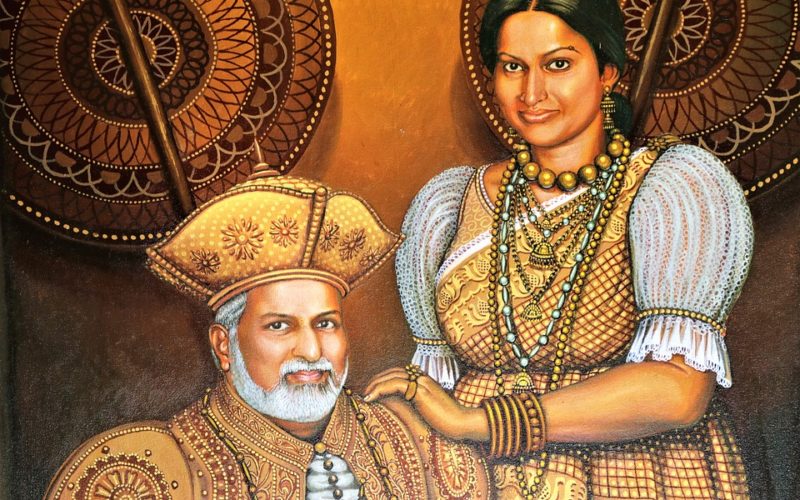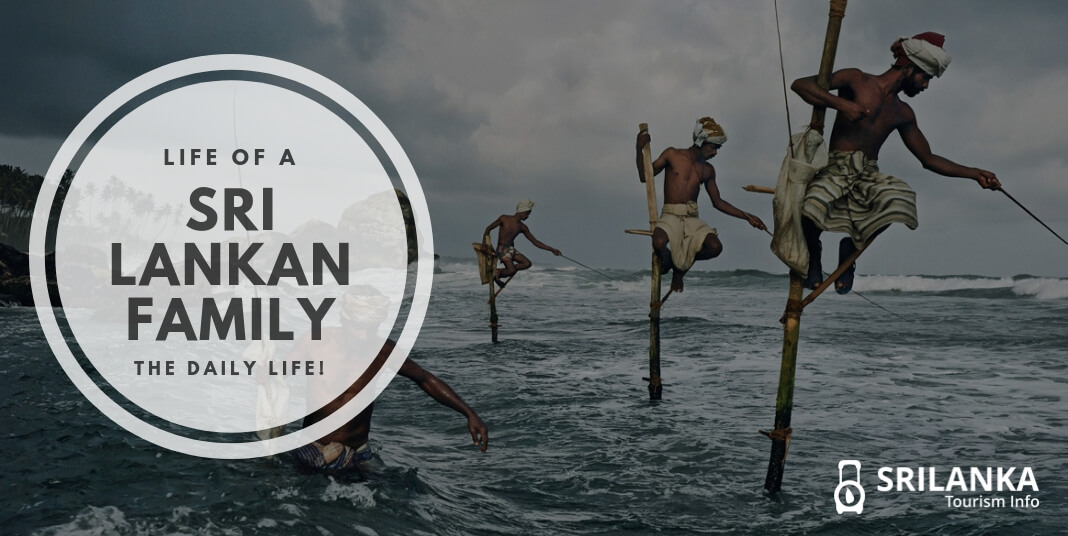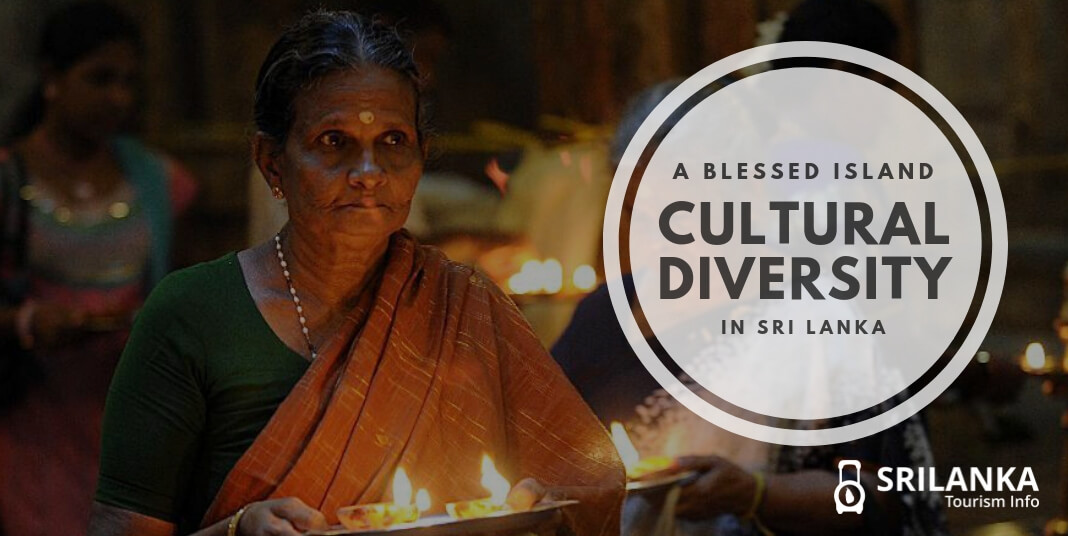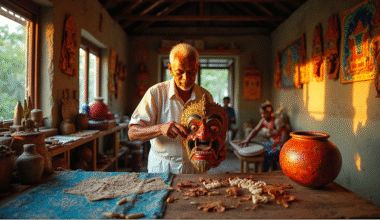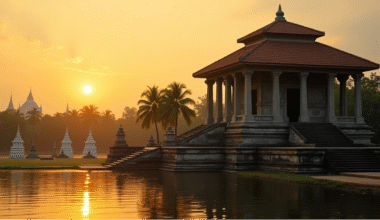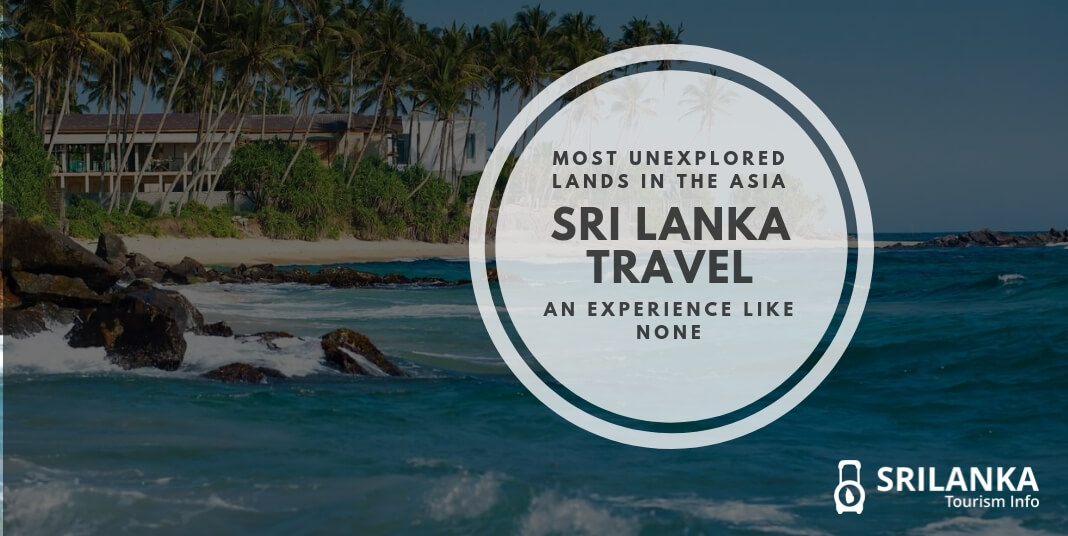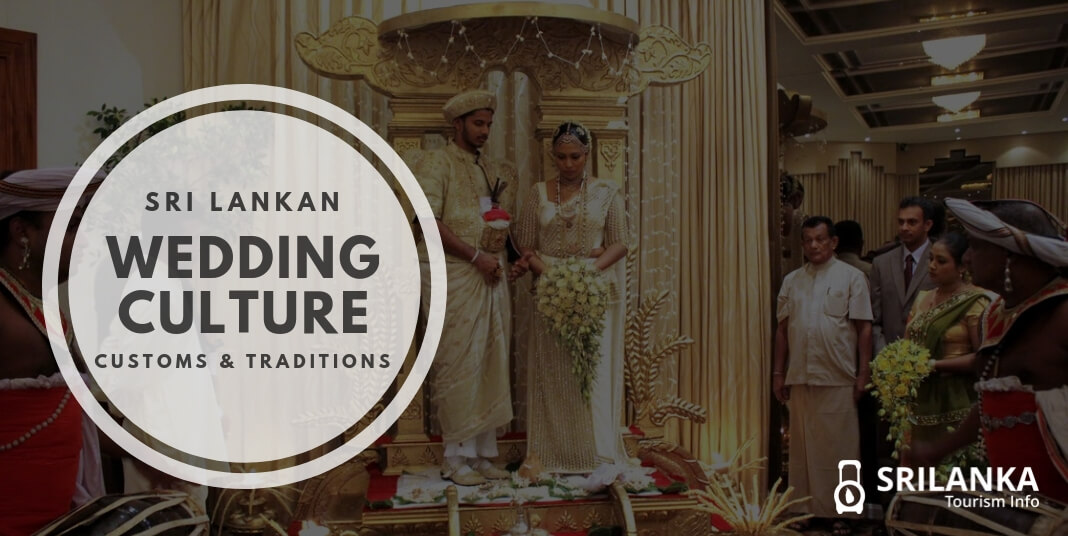It was the Sinhalese Monarch which was referred to as the Kings of Sri Lanka. They were the heads of state of the Sinhala Kingdom. This is what now known as Sri Lanka.
The monarch led the absolute power of the island, and the succession of the rule was hereditary. The ruler was comprised of the reigning monarch, their family, and the royal household that supports and facilitates the king in the exercise of the royal duties and prerogatives.
The origin of Sinhalese monarchy lies by the migration of North Indian Indo-Aryan immigrants to the island. The traditional chronicles of Sri Lanka (the Dipavamsa, Mahavamsa, and Culavamsa) narrates the date of establishment of the first Sinhala Kingdom in 543 by the landing of Prince Vijaya who was an Indian Prince along with his 700 followers landed in Sri Lanka and set out the Kingdom of Tambapanni.
Singhalese mythology states that Prince Vijaya and his followers were ordered to be the progenitors of the Sinhalese people. But, according to the story narrated in Divyavadana, the immigrants were probably ruled by the scion of a royal house in India.
But instead, there have been certain groups of adventurers and pioneer merchants who were exploring new lands. At the time of the Singhalese Kingdom, they concerned about the political states of the Sinhalese people and their ancestors.
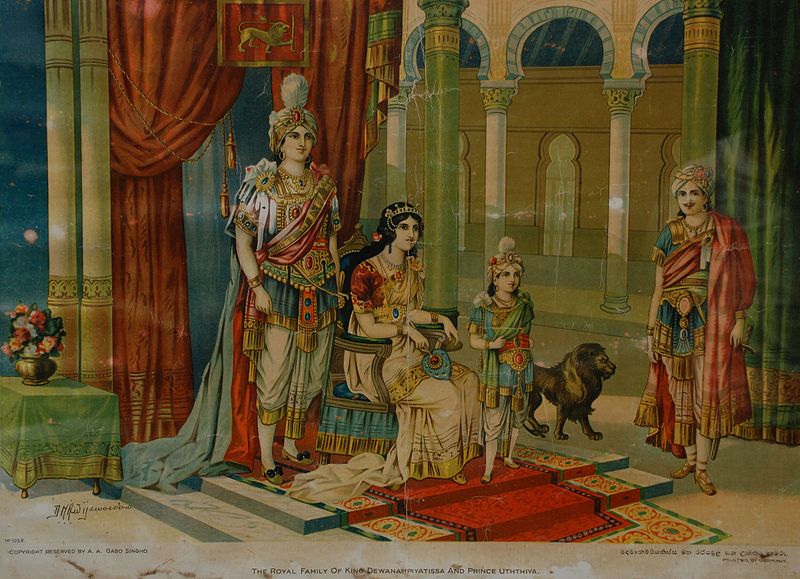
The state did not exist as one continuous state but has been historically referred to as a series of successive kingdoms known by the city. It was in this city the administrative center was located.
Those are in the chronological order of ancient kingdoms of Sri Lanka is as follows:
- Kingdom of Tambapanni
- Kingdom of Upatissa
- Kingdom of Nuwara
- Kingdom of Anuradhapura
- Kingdom of Polonnaruwa
- Kingdom of Dambadeniya
- Kingdom of Gampola
- Kingdom of Kotte
- Kingdom of Sitawaka
- Kingdom of Kandy.
The ancient kingdoms of Sri Lanka existed is what made today’s Sri Lanka. By 1815, by the king Sri Vikrama Rajasimha of Kandy, the Sinhala Kingdom discontinued its existence by the generations of European influences and upheaval in the royal court.
During the era of the Sinhalese Kingdom, other political bodies also found existence on the island. It included the Jaffna Kingdom, the Vanni Chieftaincies, the Portuguese and the Dutch colonies. But these bodies were not part of the Sinhala Kingdom.
The introduction of the Buddhism was during the monarch of Devanampiya Tissa through the Emperor Ashoka of India. During the time of Kithsirimevan, Sudatta, who was the sub-king of Kalinga and Hemamala brought the ‘Tooth Relic of the Buddha’ to Sri Lanka.
It is believed that he brought it because of the unrest in the country. Kithsirimevan holds it in the procession and kept the relic in a mansion named Datadhatughara. His order was to hold the procession annually, and it still held as a tradition in the country.
The ‘Tooth Relic of Buddha’ in no time became the most sacred objects in the island. There was even a belief that the ruler who owned the Tooth Relic will be the rightful leader of the country.
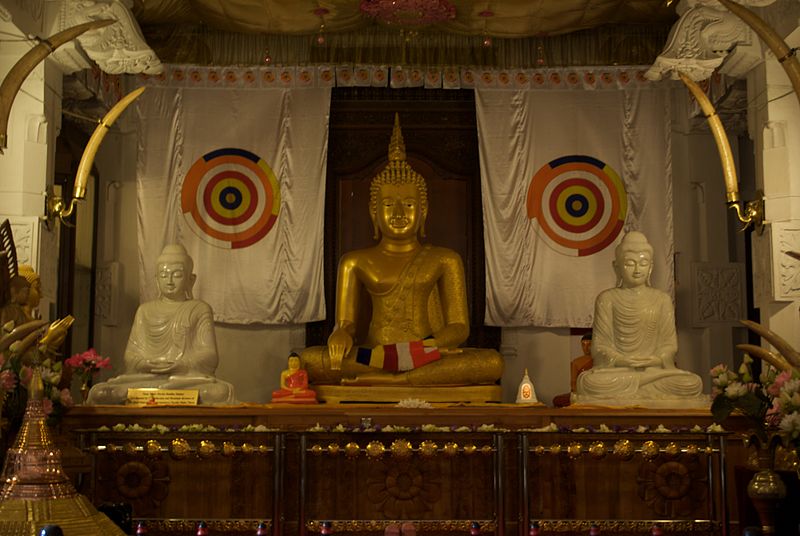
The role of the monarch in the country was absolute. The king was the head of the state and is aided with high-level officials and board of ministers, and he is treated as the supreme power throughout the island.
Even he does not hold the complete control over the whole island. It was not that the monarch tried to take over the control, but in reality, it was more of an aspiration.
But, it is to be said that there existed the periods of effective control over the island from time to time. The monarch held judicial power and influence. Moral principles, traditions, and legal customs based on Buddhism were used as the bases of law.
The king proclaims the laws and legal measure, and it was supposed to be followed by the justice administration. The king was the final judge in all legal disputes. All the cases against the royal family members and the high dignitaries of the state were left for the judgment by the king.
Although, the king must exercise power given to him with care and only after consulting with his advisers.
Pre-history of Sri Lanka:
Anuradhapura Period
The Vijaya Dynasty of Kings continued in Sri Lanka until 65 CE, with brief interruptions. It continued until a member of the Lambakanna royal family. Vasabha founded the Lambakanna Dynasty.
Then, the Lambakannas ruled the island for about four centuries. Mahasena (reigned 276-303) was their most noteworthy king who was responsible for the construction of major irrigation systems and flag bearded heterodox Buddhists sect.
This dynasty was put to an end by the invasion of Pandyans from the south of India. Later handing it over to Sinhalese in 432. It was Dhatusena (reigned 459-477) who defeated the Pandyas and handed it over to the Sinhalese rule with the line of Morya Kings. Dhatusena’s son Kashyapa I (reigned 477-495) who moved the capital from Anuradhapura to the rock fortress of Sigiriya, later retitled to Anuradhapura after Kashyapa lost his throne.
From the beginning of the 7th century, there began an increase in the involvement of the South Indian powers. They involved in the presence of Tamil mercenaries in the capital and the island’s politics.
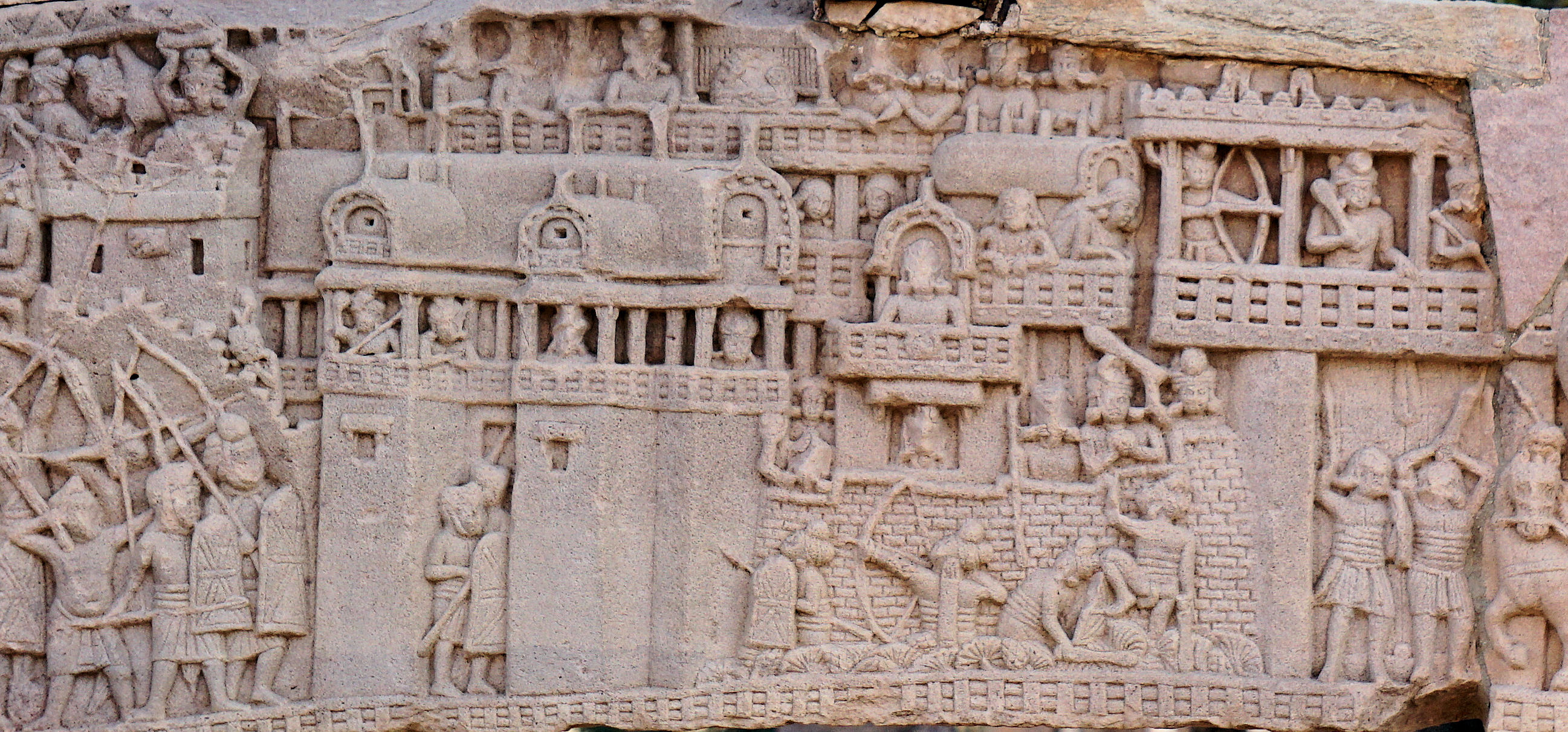
Even they had a significant role in placing King Manavamma, who was a Sinhalese royal fugitive on the throne in 684. The Pallava rulers of South India supported King Manavamma.
King Manavamm is the one who founded the second Lambakanna dynasty. It reigned for about 400 years in Anuradhapura. This dynasty produced several distinguished kings who consolidated and extended the Sinhalese political power in the island.
It was during this period the involvement of Sinhalese in the southern India become even closer. The Sinhalese Kings were pulled into dynasty battles between the Pandyas, the Pallavas and the Cholas.
This resulted in the invasions from the South India and to retaliatory raids which became a recurrent phenomenon. Because of the regional particularism and internecine warfare, the island’s political and military power weakened by the 10th century.
It was then the Cholas who were hostile because of the Sinhalese alliance with the Pandyas, attacked and occupied the Kingdom in 993 and added Rajarata as the province of Chola Empire. In 1017, when the Cholas seized the southern province of Ruhuna, the conquest was completed.
Polonnaruwa Period
The Cholas occupied the island until 1070. Later Vijayabahu liberated the Kingdom of Sri Lanka and re-established the Sinhalese power. The capital was shifted from the eastward to Polonnaruwa, which is the city that was easier to defend from the South Indian attacks and the city that controlled the route to Ruhuna.
Polonnaruwa stayed as the capital for 150 years. Polonnaruwa period even had the most colorful king, Parakramabahu I (reigned 1153-86). It was under his rule the kingdom enjoyed the most prosperity.
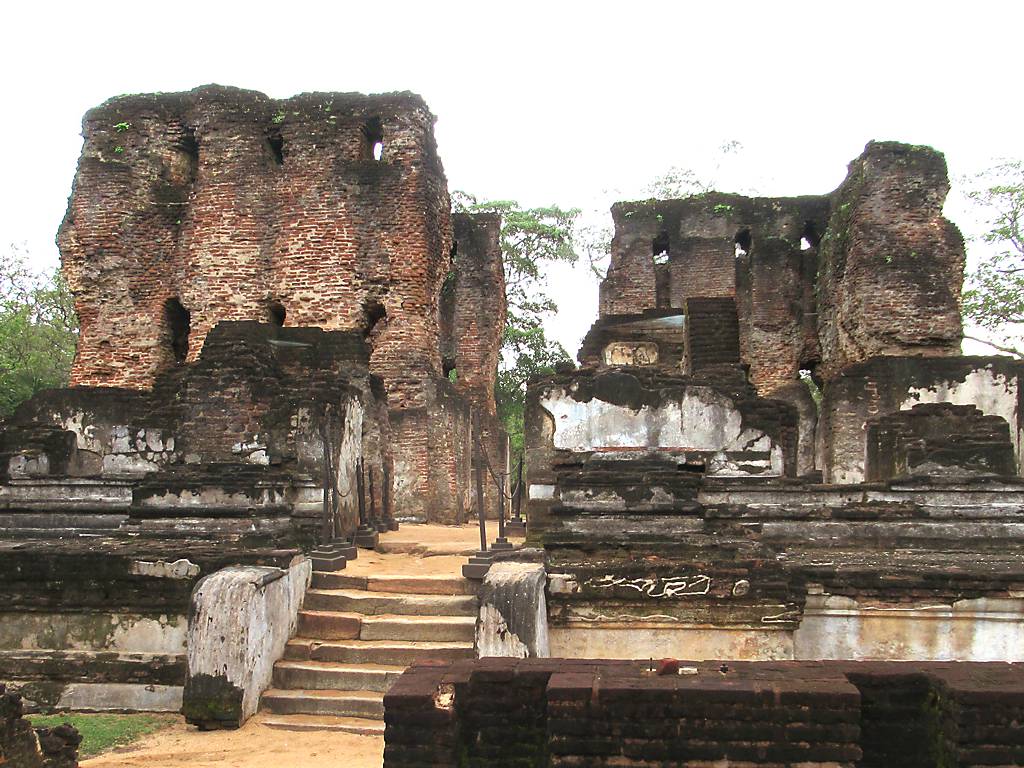
He followed a robust foreign policy and dispatched a punitive naval expedition to Myanmar. He even sent the army to invade the Pandyan Kingdom, but those initiatives were not a success.
The throne was later passed on to the Kalinga dynasty which increased South Indian influence. The last effective ruler of the Polonnaruwa period was Nissankamalla (reigned 1186-96).
While the last king was Magha reigned (1215-36), who was an adventurer from South India. He seized power and ruled the island with severity.
The Government and the Society
The Kingdom in Sri Lanka was Brahmanic along with deep Buddhist influences. All the kings of the Sri Lanka were practicing Buddhism and were the patrons of Buddhist institutions.
Kingship was unifying the political institution during the period of Anuradhapura and Polonnaruwa. This represented the aims and achievements of the Sinhalese people.
The bond between the Buddhism and kingship paved the way for Buddhism to flourish in the island. Kings built and maintained many shrines and monasteries. They intervened to establish and prevented divisions within the community.
The support and the blessing of the clergy became essential for a peaceful and continuous reign. The nobles and the commoners lavishly supported them, and as a result, the Buddhist institutions prospered.
Many beautiful temples were built, and they all possessed finely crabbed sculptures. The monasteries became centers for learning Buddhist philosophy and the languages Pali and Sinhalese.
Fall of Polonnaruwa
In 1186, Parakramabhahu passed away. The throne was then handed over to the non-Sinhalese Kalinga Dynasty – to Nissankamalla who is the brother of Parakramabahu I’s Kalinga Queen.
By the death of Nissankamalla in 1196, the kingdom became weak by the ruling of ineffective rulers. The pandyas of India and the Kalingas, the non-Sinhalese factions, gained power in the island as the result of the dynastic marriages with the royalties of South India.
Which led to conflicts between these factions. South Indian worthies engaged the positions of influence under the Kalinga Kings. The mercenaries from various origins bolstered Their power.
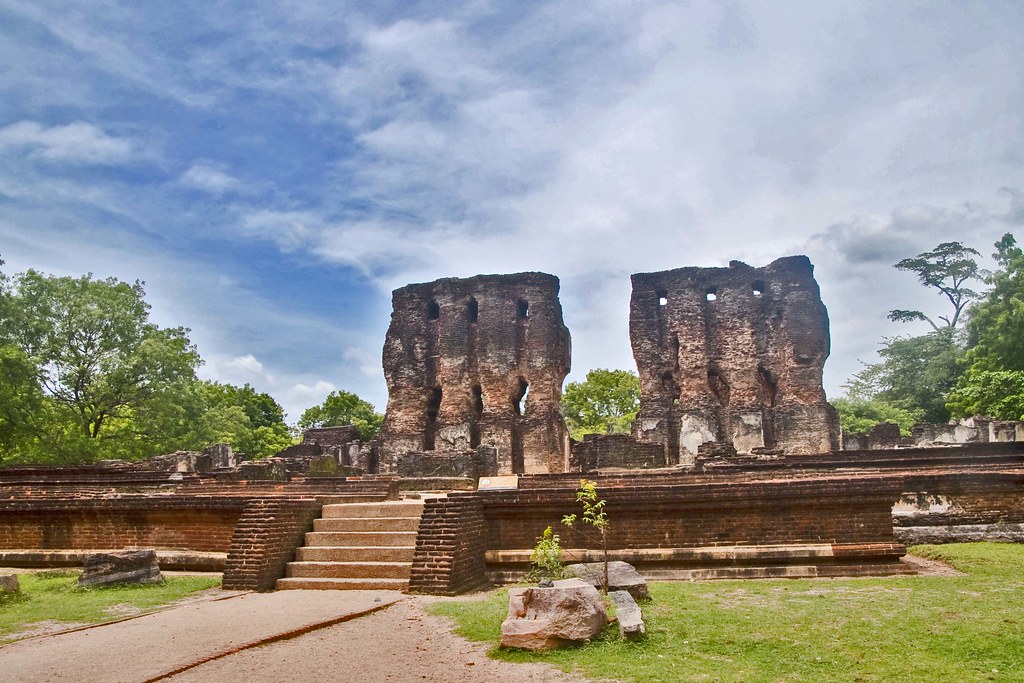
The Magha of the Kalingas invaded the Kingdom of Sri Lanka in 1214, with the help of thousands of these mercenaries. He by then took over the control of the whole island. Magha’s rule, which was as a veritable reign of terror, lasted until 1255.
It was marked as the bold disregard of traditional authority and established a religion. Polonnaruwa, as a result, fell into the hands of non-Sinhalese elements, each competing with each other for power and office.
THE ROYAL DYNASTY OF SRI LANKA
List of Sri Lankan Kings Name
{We are not calming the list given below is accurate. The list is completely based on the information gathered from the internet}
- Vijaya B.C. 543 Tambapanni (First King of Sri Lanka) – Interregnum 505
- Panduvasudeva 504 Vijitapura
- Abhaya 474 – Interregnum 454
- Pandukabhaya 437 Anuradhapura
- Mutasiva 367
- Devanampiya Tissa 307 B.C. 247
- Uttiya 267
- Mahasiva 257
- Suratissa 247
- Sena and Guttika 237
- Asela 215
- Elara 205
- Duttha Gamani 161
- Saddha Tissa of Anuradhapura 137
- Thulanthana 119
- Lanja Tissa 119
- Khallata Naga 109
- Vatta Gamani 104
- Five Tamils 103
- Vatta Gamani (restored) 88
- Mahachuli Maha Tissa 76
- Chore Naga 62
- Tissa 50
- Siva 47
- Vatuka 47
- Daru Bhatika Tissa 47
- Niliya 47
- Anula 47
- Kutakanna Tissa 42
- Bhatikabhaya 20
- Mahadathika Maha Naga A.D. 9
- Amanda Gamani 21
- Kanirajanu Tissa 30
- Chulabhaya 33
- Sivali 35 (Interregnum of three years)
- Ila Naga 38
- Chandamukha Siva 44
- Yassalalaka Tissa 52
- Subharaja 60
- Vasabha 66
- Vankanasika Tissa 110
- Gaja Bahu I 113
- Mahalla Naga 135
- Bhatika Tissa 141
- Kanittha Tissa 165
- Khujja Naga 193
- Kuncha Naga 195
- Siri Naga I 196
- Voharika Tissa 215
- Abhaya Naga 237
- Siri Naga II 245
- Vijaya Kumara 247
- Sangha Tissa 248
- Sanghabodhi (Siri Sangabo) 252
- Gothakabhaya 254
- Jettha Tissa I 267
- Mahasena 277
- Siri Meghavanna 304 c. 340
- Jettha Tissa II 332
- Buddhadasa 341
- Upatissa 370
- Mahanama 412 c. 428
- Sotthi Sona 434
- Chhattagahaka 434
- Mitta Sena 435
- Six Tamils 436
- Dhatusena 463
- Kassapa I 479 c. 527 Sigiriya.
- Moggallana I 497 Anuradhapura.
- Kumara Dhatusena 515
- Kittisena 524
- Siva 524
- Upatissa II 525
- Amba Samanera Silakala 526
- Dathappabhuti 539
- Moggallana II 540
- Kittisiri Meghavanna 560
- Maha Naga 561
- Aggabodhi I 564
- Aggabodhi II 598 c. 609
- Sangha Tissa 608
- Dalla Moggallana 608
- Silameghavanna 614
- Aggabodhi III 623
- Jettha Tissa III 623
- Aggabodhi III (restored) 624
- Dathopatissa I 640
- Kassapa II 652
- Dappula I 661
- Dathopatissa II 664
- Aggabodhi IV 673
- Datta 689
- Unhanagara Hatthadatha 691
- Mahavamma 691
- Aggabodhi V 726
- Kassapa III 732
- Mahinda I 738
- Aggabodhi VI 741
- Aggabodhi VII 781 Polonnaruwa
- Mahinda II 787 Anuradhapura
- Dappula II (Udaya) 807 ? 790
- Mahinda III 812
- Aggabodhi VIII 816
- Dappula III 827
- Aggabodhi IX 843
- Sena I 846 ? 819/20 Polonnaruwa
- Sena II 866
- Udaya I 901
- Kassapa IV 912
- Kassapa V 929
- Dappula IV 939 ? c. 918/9
- Dappula V 940
- Udaya II 952
- Sena III 955
- Udaya III 964 ? c. 942/3.
- Sena IV 972
- Mahinda IV 975
- Sena V 991
- Mahinda V 1001 Deported c. 1017. Anuradhapura.
- Kassapa on Vikrama Bahu 1037 |
- Kitti I 1049 |
- Mahalana Kitti 1049 |
- Vikrama Pandya 1052 | Ruhuna.
- Jagatipala 1053 |
- Parakrama 1057 |
- Lokissara 1059 |
- Vijaya Bahu I 1056-1111 Polonnaruwa.
- Jaya Bahu I 1108-1145/6 Polonnaruwa and Ruhuna.
- Vikrama Bahu I 1111-1132 Polonnaruwa.
- Gaja Bahu II 1131-1153
- Parakrama Bahu I 1153-1186
- Vijaya Bahu II 1186-1187
- Mahinda VI 1187
- Nissanka Malla 1187-1196
- Vira Bahu I 1196
- Vikrama Bahu II 1196
- Codaganga 1196-1197
- Lilavati (1) 1197-1200
- Sahasa Malla 1200-1202
- Kalyanavati 1202-1208
- Dharmasoka 1208-1209
- Anikanga 1209
- Lilavati (2) 1209-1210
- Lokissara 1210-1211
- Lilavati (3) 1211-1212
- Parakrama Pandya 1212-1215
- Magha 1215-1236
- Vijaya Bahu III c. 1220-1224 Dambadeniya.
- Parakrama Bahu II 1234-1269
- Vijaya Bahu IV 1267/8-1270
- Bhuvanaika Bahu I 1271-1283 Dambadeniya and Yapahu.
- Interregnum 1283-1302
- Parakrama Bahu III c. 1302-1310 Polonnaruwa.
- Bhuvanaika Bahu II ? 1310-1325/6 Kurunagala.
- Parakrama Bahu IV 1325/6
- Bhuvanaika Bahu III 1325/6
- Jaya (Vijaya) Bahu 1325/6
- Bhuvanaika Bahu IV 1344/5-1353/4 Gampola
- Parakrama Bahu V 1344/5-1359 Dedigama and Gampola
- Vikrama Bahu III c. 1357-1374 Gampola
- Bhuvanaika Bahu V 1372/3-1404/5 or 1406/7 Gampola.
- Vira Bahu II 1391/2-1396/7 Rayigama
- Vira Alakesvara (Vijaya Bahu VI) c. 1397-1409 Rayigama.
- Parakrama Bahu Epa 1409-1412
- Parakrama Bahu VI c. 1412-1467 Kotte.
- Jaya Bahu II c. 1467-1472/3
- Bhuvanaika Bahu VI 1472/3-1480/1
- Parakrama Bahu VII c. 1480/1-1484
- Parakrama Bahu VIII c. 1484-1518 7
- Parakrama Bahu IX 1509-1528 Kelaniya.
- Vijaya Bahu VII 1509-1521 Kotte
- Bhuvanaika Bahu VII 1521-1551
- Dharmapala 1551-1597
- KINGS OF SITAWAKA
- Mayadunne 1521-1581
- Rajasinha I 1554-1593
- Rajasurya 1593-1594
- KINGS OF KANDY
- Vimala Dharma Surya I 1590-1604
- Senarat 1604-1635
- Rajasinha II 1629-1687
- Vimala Dharma Surya II 1687-1707
- Narendra Sinha 1707-1739
- Vijaya Rajasinha 1739-1747
- Kirtisri 1747-1781
- Rajadhirarajasinha 1781-1798
- Sri Vikrama Rajasinha 1798-1815
(As many of the Sri Lankan names, most of the Kings were also known to have longest Sri Lankan names, but not included to conserve space)
The Chronological Table of the Monarchs
Coming down to an accurate chronological table of the monarchs, of a period of about 2500 years has been one of the biggest challenges the scholars of the Sri Lankan history faced. The most troubling periods were the pre-Anuradhapura period and the latter part of Kurunegala, Yapahuwa Gampola period and the Kotte periods.
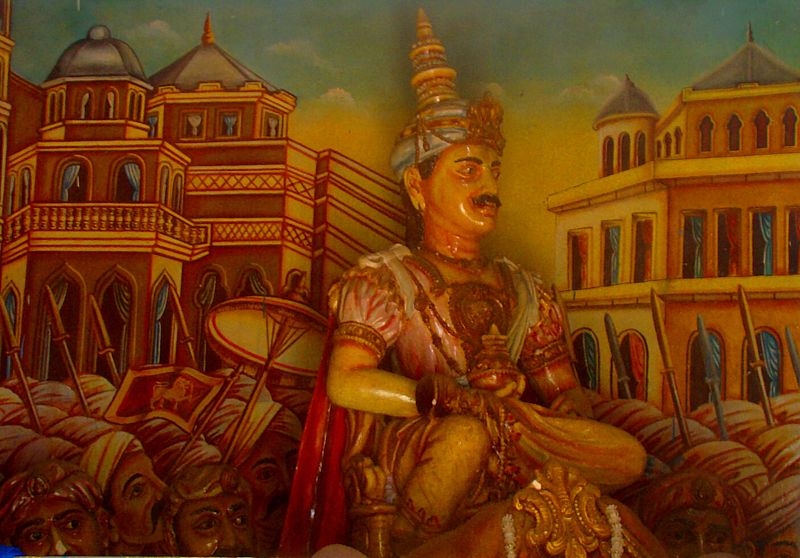
The pre-history of Sri Lanka begins from about 5th century B.C by the settlement of Sinhalese people on the island. Sinhala is an Indo-Aryan group that came from North India. Still, about 70% of people inhabiting the island are known as Sinhalese. It is believed that the Sinhalese migrated first from the Indus River of North India. Indus River was also the home of Kambojas. History says that the Indo-Aryans later migrated to Bengal-Orissa region of the North East of India.
Mahavamsa is the chronicle of the Sinhalese people, which is considered as one of the oldest in the world. The continuing history of the nation is still being recorded from the 550 BC. The authorships are designated to Thera Mahanama (First Part) – who was a resident at Dighasandasenapati Pirvena at Anuradhapura and to Dharmakitti Thera (Second Part) in Polonnaruwa.
Period of the rule of Vijaya 483-445 BC
The Chronicle of Mahavamsa narrated that Prince Vijaya landed in Sri Lanka by ship, along with 700 followers. They are believed to be banished by the King of Vanga in India. They started nurturing on the land, and they named the place as Thambapanni.
Vijaya is said to land on Sri Lanka the exact day of Buddha’s Parinirvana (passing away). Vijaya later came to know that the place was called as Sirisavatthu which was inhibited by Yaksas. Yaksas were a tribe of local inhabitants believed to have a violent nature. Vijaya and his followers came into power. Kuveni, the daughter of Yaska King, offered her hand to Vijaya and he accepted it.
Kuveni advised Vijaya to get rid of Yaksas and built Thambapanni Nagara at the land he holds power.
After being established in the new land. Vijaya was forced to be the King by his followers. But Vijay declined and said it would not do so until he had a bride from the Shakthriya clan to be his queen.
The messenger was sent to King Pandu of Madura in India, in the request of his daughter’s hand. King Pandu agreed to the proposal and sent his daughter to Vijaya along with 700 maids and brides for his followers.
Vijaya later removed Kuveni from their relationship along with their two children. The kids were accepted, but Kuveni was not spared for bringing shame to her tribe. As the legacy, it was these kids who later became the ancestors of Pulindas.
Vijaya and the Pandu Princess got married, and he is celebrated as the First King of Sri Lanka. Vijaya died without an heir since he had no son. It is said that he ruled over with absolute justice for 38 years.
Upatissa 445 – 445 BC
Upatissa was the chief minister of Vijaya and succeeded as regent as Vijaya died without an heir. He ruled for a year until Panduvasdeva arrived. Panduvasdeva was the younger son of Vijaya’s brother Sumitta.
Panduvasdeva 444 – 414 BC
Prince Panduvasdeva came along with 32 noblemen. He married Bhadda Kacchana, and they were announced as the Second King and Queen of the Kingdom of Sri Lanka. The king had ten sons and a daughter. The daughter, Unmada Chitta was predicted to have a son, who will later destroy his uncles. As per the prediction, the King kept her under solitary confinement.
Unmada Chitta married Dighamini later and gave birth to a boy. The kid was brought up in hiding and was named Pandukabhaya.
The king passed away, and his seat of the monarch is known as Vijithapura. The reservoir Abeyawewa was built during his rule. This is considered to be the first human-made reservoir.
Abhaya 414 – 394BC
Tissa 394 – 377 BC
Panduvasdeva’s eldest son was Abhaya. He was deposed, and Tissa got the power. Tissa was later slain in a battle led by Pandukabaya who then took over the throne.
Source:
- https://en.wikipedia.org/wiki/List_of_Sri_Lankan_monarchs
- https://www.britannica.com/place/Sri-Lanka/Conversion-to-Buddhism#ref24240
- http://www.lankalibrary.com/geo/list%20of%20kings.htm
- https://lanka.com/about/history/

